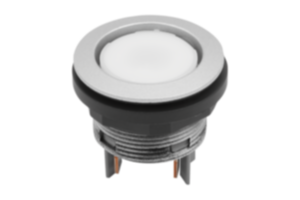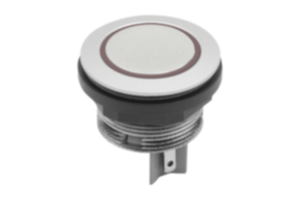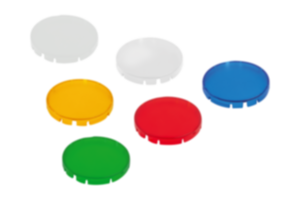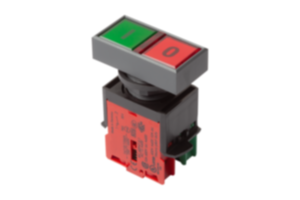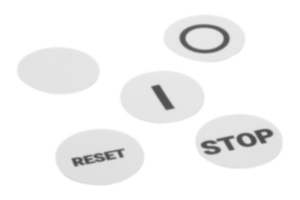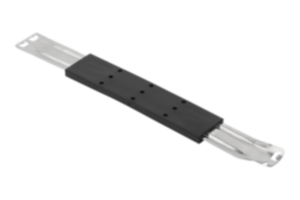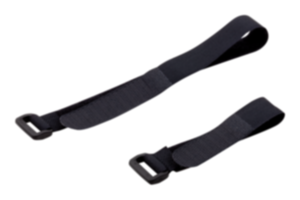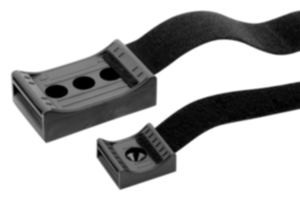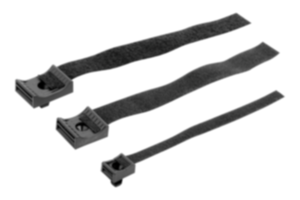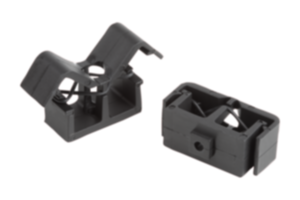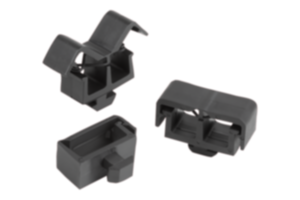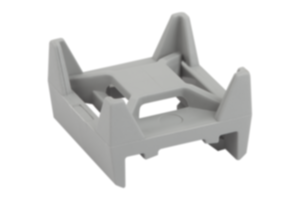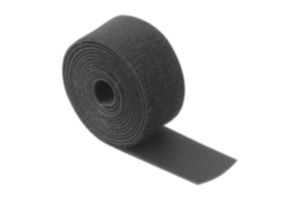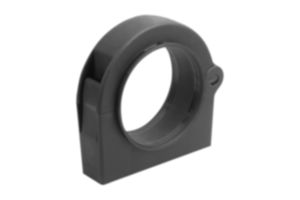Swing clamps, floating clamp
Swing clamps and floating clamps - Clamping fixtures from norelem
What is a swing clamp?
What is a floating clamp?
Swing clamps and floating clamps in comparison
Why clamping fixtures from norelem?
Swing clamps and floating clamps - Clamping fixtures from norelem
Both swing clamps and floating clamps are types of clamping fixtures. In machining technology, these standard items are used securely fixate or clamp the workpiece.
A swing clamp enables the product being machined to be immobilised by a swivelling thrust pad. By turning a grip, lever or screw, the thrust pad is pressed against the workpiece to hold it in place. Swing clamps offer a quick and easy clamping solution for a wide range of applications.
In contrast, floating clamps allow for certain fluctuations or tolerances of the workpiece during the clamping process. This is particularly useful when machining products with irregular shapes. The floating clamp can also be used by applications where a certain amount of movement is required during machining. Floating clamps minimise clamping errors and improve machining accuracy.
Both types of clamping fixtures belong to the group of standard parts, as they have standardised designs. These concepts are widely used in the manufacturing industry. By using these clamping devices, manufacturers can increase efficiency, improve quality and boost productivity.
The importance of clamping fixtures lies in their versatility and adaptability to different manufacturing processes. They come in a variety of shapes, sizes and configurations, including swing clamps, floating clamps and many others. Each type of clamping fixture offers specific advantages and functions to meet the requirements of different applications.
In addition, clamping fixtures enable precise positioning of workpieces, which is crucial for machining. The secure fixation allows machines to perform precise movements to cut profiles and threads, drill holes and perform other machining tasks. This leads to high quality finished products and reduced waste and subsequent processing.
Another important aspect is safety in the workplace. By holding objects in firmly in place, clamping fixtures minimise the risk of accidents that could be caused by material slipping or shifting during machining.
Before buying, would you like to see the CAD data for our swing clamps or floating clamps? Get direct access to the technical drawings of the standard parts.
What is a swing clamp?
A swing clamp ensures that workpieces are held securely in place. The fixtures consist of:
- a movable thrust pad that swivels around a pivoting point.
- a mechanism, such as a screw, lever or grip, with which the thrust pad can be moved and clamped.
- an mounting base that is used to attach to a workbench or other work surface.
After mounting on a product or workbench, the thrust pad is pressed against a workpiece by rotating the mechanism. The part being manufactured is now securely clamped. Once the product is securely held, the clamping mechanism of the swing clamp is locked. This process ensures that the workpiece does not slip or is loosened during the machining process. The clamped material can now be machined, either by milling, drilling, sawing or some other manufacturing process.
To remove the finished part from the swing clamp, the clamping mechanism of the swing clamp is released.
Swing clamps are used in various fields of metal and woodworking as well as in other branches of machining technology. They facilitate precise positioning and fixation of workpieces, enabling accurate machining and improved productivity.
The advantages of swing clamps lays in the ease of use and flexibility. The thrust pad can be adjusted quickly and easily to secure a variety of workpieces by simply turning it. This flexibility enables workpieces of different shapes and sizes to be securely clamped. This in turn saves time and increases productivity. In addition, swing clamps offer a reliable clamping solution that improves workplace safety. The secure clamping of workpieces reduces the risk of accidents and injuries, which increases work safety and reduces operating costs.
Swing clamps in the norelem range
The norelem range has a wide variety of swing clamps. From simple swing clamps to hydraulic or pneumatic swing clamps, everything you need. However, there are some versions that we would like to focus on here.
Our mini swing clamps with locking function are characterised by precise performance and easy handling. They are used where clamping points must be free for inserting and removing workpieces. An audible click signals that the clamping position has reached its end position. The click signal indicates that the workpiece is reliably secured.
Manufactured from high-quality materials, the body made of QT steel with a nickel-plated surface ensures long service life. The lever is a striking orange colour, which ensures easy identification and creates an appealing appearance.
The heavy duty swing clamps must also be specifically mentioned here. The heavy duty swing clamps have the following advantages:
- Automation capable: The clamps can be seamlessly integrated into automated production processes to ensure efficient and continuous machining.
- High clamping force: The design of our swing clamps provides high clamping forces, which enables secure fixation and ensures precise machining.
- Rapid clamping: With the rapid clamping function, our swing clamps enable fast and efficient clamping, which increases productivity and shortens turnaround times.
Our range includes heavy duty swing clamps and heavy duty swing clamps with extended clamping travel. Both versions are available in two types.
- Form A – with clamping arm
- Form B – without clamping arm
Other swing clamps and accessories in the norelem range at a glance:
- Mini swing clamps
- Mini swing clamps with cam lever
- Swing clamps with matching clamping arms
- Clamping arms for hydraulic swing clamps
- Compact clamping arms for hydraulic swing clamps
What is a floating clamp?
A floating clamp is a special type of clamping fixture. In contrast to rigid clamping fixtures a floating clamp allows for a certain amount of fluctuations and tolerances on the workpiece during the clamping process. The term ‘floating’ refers to the fact that the workpiece has a certain degree of freedom. The part can move within the clamping device while still being firmly clamped. This freedom of movement can take place in different directions, depending on the machining requirements. This proves to be extremely advantageous when machining workpieces with irregular shapes. Especially in applications that require a certain amount of movement during machining.
To operate floating clamps, follow these instructions.
Press the floating clamp down. Swivel the jaws as far as they will go. The floating clamp is positioned under the workpiece with light spring force. Tighten the floating clamp with the hex nut (AF 18) (pay attention to the min. and max. torque). During the clamping process, the workpiece is clamped and simultaneously supported. Releasing is carried out in the reverse order.
Floating clamps in the norelem range
The range includes two different types of floating clamp. Both standard parts have bodies and clamping jaws made from low carbon steel and aluminium housings.
Our floating clamps offer reliable solutions for clamping and supporting overhanging clamping points on components. They were developed to minimise vibrations and prevent deflection during machining. The main body and the clamping jaws of these standard parts are made of case-hardening steel, while the housing is made from aluminium. Two versions of the floating clamps are available. Form A is a floating clamp with an M12 connection thread. Form B, on the other hand, has mounting holes for M6 screws.
The floating clamp with separate workpiece clamp and interlock has a main body and clamping jaws made from case-hardening steel, the housing is aluminium. This type of floating clamp has been specially developed to securely clamp and support thin-walled, fragile and flexurally sensitive components. The clamp effectively prevents vibrations and deflection during machining. These floating clamps are also available in two Forms, which correspond to the Forms already mentioned. (Form A with M12 connecting thread; Form B with mounting holes for M6 screws)
To install the floating clamps, proceed as follows:
- Attach the clamp to the fixture via the connecting thread or mounting holes.
- Adjust the height stop and the swivel range via the red or blue (depending on type) adjusting sleeve and lock it with the grub screw. Form A - 3x 2.5 hex socket; Form B 4x 2.5 hex socket.
- When setting the height limit, make sure to allow for a generous amount of play at the top.
- IMPORTANT when fitting Form A! To ensure reliable operation, the M12 tapped hole must always be closed off.
- The standard clamping jaws can be modified or replaced to suit specific clamping situations.
In addition to floating clamps, norelem also has the matching clamping jaws made from low carbon steel on offer. These are available in five different styles and increase the clamping range of the floating clamps.
Do you have any questions about our floating clamps? We are here for you and are happy to help.
Swing clamps and floating clamps in comparison
Swing clamps and floating clamps are two different types of clamping devices used in machining technology. While both are used to securely hold workpieces in place, they differ considerably in the way they work.
Swing clamps work on the principle of clamping the workpiece using a rigid thrust pad. The thrust pads usually swivel around a pivoting point in order to secure the workpiece at different angles. The swivel mechanism enables precise positioning of the workpiece and easy handling.
In contrast, floating clamps allow for a certain flexibility of the workpiece during the clamping process. This is particularly useful when machining workpieces with irregular shapes. The flexibility of floating clamps minimises clamping errors and enables more precise machining of delicate workpieces.
Overall, swing clamps offer robust and stable clamping of workpieces, while floating clamps offer a more flexible solution for applications with specific movement and tolerance requirements. The choice between the two therefore depends on the specific requirements of the respective machining task.
An important factor when selecting is the type of workpiece and the machining requirements. If the workpiece requires rigid clamping and does not permit any movement during machining, a swing clamp may be the preferred choice. In cases where the workpiece requires certain amounts of movement, a floating clamp would be more suitable.
The size and shape of the workpiece also play a role. The swing clamp excels with large or irregularly shaped workpieces that require precise positioning. A floating clamp is more suitable for thin-walled or delicate workpieces where a certain degree of flexibility is required to prevent damage.
In addition to the points already mentioned, the required clamping force, machining accuracy and machining speed also play a major role. The clamps are available in different sizes and styles and therefore also offer different clamping forces and precision.
Why clamping fixtures from norelem?
norelem offers you a wide range of high-quality clamping fixtures that have been specially developed for a variety of applications in machining technology. Our products are characterised by their robustness, reliability and precision, which leads to improved productivity and quality in production.
You too can enjoy the many advantages benefit from our long years of experience.


